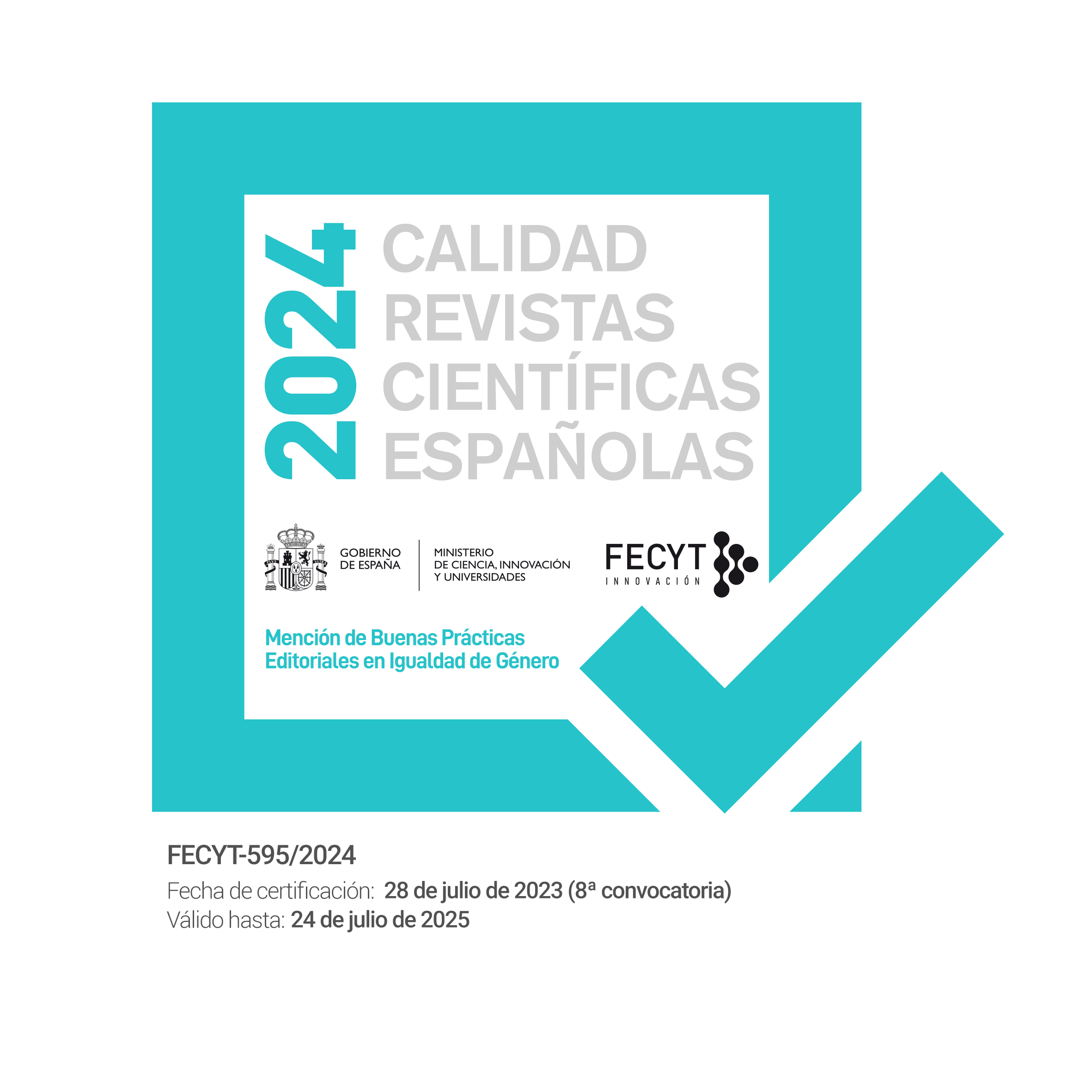Las complejidades interpersonales y estructurales entre las mujeres que experimentan la falta de vivienda en una comunidad fronteriza entre México y Estados Unidos
DOI:
https://doi.org/10.15257/ehquidad.2021.0012Palabras clave:
Mujeres, Falta de vivienda, Complejidades estructurales, salud, violencia de géneroResumen
Las complejidades de la vida de las mujeres que se encuentran sin hogar ameritan una mayor exploración, ya que no hay información suficiente sobre los desafíos interpersonales y estructurales de su vida. El objetivo de este estudio es múltiple: explorar las experiencias de las mujeres sin vivienda en El Paso, Texas, una ciudad que limita con Ciudad Juárez México, para identificar las barreras a los servicios sociales y de salud, promover la agencia y mejorar el acceso a la atención. El reclutamiento de participantes se realizó a través de agencias asociadas para seleccionar una muestra de 15 mujeres hispanas y 15 no hispanas que se encontraban sin hogar y residían en refugios locales en la primavera de 2019. El Inventario de Depresión de Beck II, Autoeficacia general (GSE), y las escalas de Experiencias Adversas de la Infancia (ACE) se administraron para mejorar la comprensión y el conocimiento sobre las características de las mujeres con una experiencia vivida de la falta de vivienda para conocer sus experiencias interpersonales y adversas y su perspectiva futura. La perspectiva feminista se empleó como parte del marco teórico para explorar más a fondo las realidades interpersonales y estructurales de las mujeres sin hogar. Surgieron tres temas principales: adversidad relacional y violencia de pareja íntima; falta de apoyo social; y desafíos relacionados con la transición de la falta de vivienda. Las implicaciones destacadas en los hallazgos informarán a los proveedores de servicios de salud y humanos, y a los tomadores de decisiones sobre las necesidades de las mujeres y la importancia del cuidador centrado en la persona para esta población. Es fundamental que los trabajadores sociales, los profesionales de servicios humanos, los encargados de formular políticas, los investigadores y el público en general hagan una pausa, escuchen y comprendan las realidades que enfrentan las mujeres sin hogar y su capacidad de recuperación para garantizar servicios de calidad que las apoyen en la transición y pongan fin a la falta de hogar.
Descargas
Citas
Beck, A.T., Steer, R.A., & Brown, G.K. (1996). Manual for the Beck Depression Inventory-II. San Antonio, TX: Psychological Corporation.
Biederman, D. J., & Forlan, N. (2016). Desired destinations of homeless women: Realizing aspirations within the context of homelessness. Creative Nursing, 22(3), 196–203
Campbell, H., & Lachica, J. G. (2013). Transnational homelessness?: Finding a place on the US – Mexico Border Transnational Homelessness. Journal of Borderlands Studies, 28(3), 279–290. https://doi.org/10.1080/08865655.2013.863441
Castaneda, E., Klassen, J. D., & Smith, C. (2014). Hispanic and Non-Hispanic homelessness populations in El Paso, Texas. Hispanic Journal of Behavioral Sciences, 10.1177/07399863114552993
City of El Paso. (2018). Demographic profile. Economic and International Development. Retrieved from https://www.elpasotexas.gov/economic-development/business-services/data-and-statistics/population
Crenshaw K. (1993). Demarginalizing the intersection of race and sex: a Black feminist critique of antidiscrimination doctrine, feminist theory and antiracist politics. In Feminist Legal Theory (ed D.K Weisberg.), pp. 383– 395. Temple University Press, Philadelphia.
Denzin, N.K. (1978). Sociological methods: A sourcebook. New York, NY: McGraw-Hill.
Domestic Abuse Intervention Programs (DAIP). (2017, March 17). Wheels. Retrieved from https://www.theduluthmodel.org/wheels/
Felitti, V. J., Anda, R. F., Nordenberg, D., Williamson, D. F., Spitz, A. M., Edwards, V., Koss, M. P., Marks, J. S. (1998). Relationship of Childhood Abuse and Household Dysfunction to Many of the Leading Causes of Death in Adults. The Adverse Childhood Experiences (ACE) Study. American Journal of Preventive Medicine 14(4).
Hendwood, B.F., Wenzel, S., Mangano, P. F., Hombs, M., Padgett, D., Byrne, T., …Uresky, M. (2015). The grand challenge of ending homelessness (Grand Challenges for Social Work Initiative Working Paper No. 9). Cleveland, OH: American Academy of Social Work and Social Welfare.
HUD. (2019). CoC homeless populations and subpopulations report-All states. Territories, Puerto Rico, and DC. US Department of Housing and Urban Development. Retrieved from https://www.hudexchange.info/programs/coc/coc-homeless-populations-and-subpopulations-reports/
Huey, L., Broll, R., Hryniewicz, D., & Fthenos, G. (2014). “They just asked me why I became homeless”: “Failure to ask” as a barrier to homeless women’s ability to access services post-victimization. Violence and Victims, 29(6), 952–966.
IBM Corp. Released 2017. IBM SPSS Statistics for Windows, Version 25.0. Armonk, NY: IBM Corp.
Jones, M. M. (2016). Does race matter in addressing homelessness? A review of the literature. World Med Health Policy 8(2). 139–156. doi:10.1002/wmh3.189.
Kohlbacher, F. (2006). The use of qualitative content analysis in case study research. Forum: Qualitative Social Research. 7(21).
Mayock, P., Sheridan, S., & Parker, S. (2012). Migrant women and homelessness: The role of gender-based violence. European Journal of Homelessness, 6(1).
Miles, M. B., Huberman, M. A., & Saldaña, J. (2014). Qualitative data analysis: A Methods Sourcebook. 3rd Ed. SAGE.
Moya, E. M., Chavez-Baray, S. M., Loweree, J., Mattera, B., & Martinez, N. (2017). Adults experiencing homelessness in the US–Mexico Border region: A photovoice project. Frontiers in Public Health, 5:113. doi: 10.3389/fpubh.2017.00113
Murphy, A., Dube, S., Steele M., & Steele, H. (2007) Clinical ACE and child clinical ACE questionnaires (Unpublished Manuscript).
Noble, H., & Heale, R. (2019). Triangulation in research, with examples. Evidence-Based Nursing, 22(3). doi: 10.1136/ebnurs-2019-103145
Nooe, R. M. & Patterson D. A. (2010). The ecology of homelessness. Journal of Human Behavior in the Social Environment, http://dx.doi.org/10.1080/109111350903269757
Paat, Y.-F., Morales, J., Tullius, R., Moya, E. M., & Alcantara, R. (2019). A life course approach to understanding homelessness of shelter residents. Journal of Social Distress and the Homeless, 28(2), 176–185. doi: 10.1080/10530789.2019.1640410
Phipps, M., Dalton, L., Maxwell, H., & Cleary, M. (2019). Women and homelessness, a complex multidimensional issue: findings from a scoping review. Journal of Social Distress and the Homeless, 28(1), 1–13. doi: 10.1080/10530789.2018.1534427
Rabiah-Mohammed, F., Oudshoorn, A., & Forchuk, C. (2019). Gender and experiences of family homelessness. Journal of Social Distress and the Homeless, 1–10. doi: 10.1080/10530789.2019.1679420
Schwarzer, R. (1993). Measurement of perceived self-efficacy. Psychometric scales for cross-cultural research. Berlin, Germany: Freie Universität Berlin
Schwarzer, R., & Jerusalem, M. (1995). Generalized Self-Efficacy scale. In J. Weinman, S. Wright, & M. Johnston, Measures in health psychology: A user’s portfolio. Causal and control beliefs (pp. 35-37). Windsor, England: NFER-NELSON.
Saldana, J. (2015) The coding manual for qualitative researchers. SAGE Publications. Third Edition.
Sesar, K., Simic, N., & Barisic, M. (2010). Multi-type childhood abuse, strategies of coping, and psychological adaptations in young adults. Croatian medical journal, 51(5), 406–416. https://doi.org/10.3325/cmj.2010.51.406
Teruya, C., Longshore, D., Andersen, R. M., Mpp, A., Anp, A. N., Leake, B., Gelberg, L. (2010). Health and health care disparities among homeless women health. Women & Health. https://doi.org/10.1080/03630242.2010.532754
The El Paso Coalition for the Homeless. (2019) Resources. Retrieved from http://www.epchomeless.org/resources/
Thorne S. (1998). Ethical and representational issues in qualitative secondary analysis. Qualitative
Health Research, 8, 547– 555.
Tsai, J., Mares, A. S., & Rosenheck, R. A. (2012). Does housing chronically homeless adults lead to social integration? Psychiatric Services, 63(5), 427–434. doi:10.1176/appi.ps. 201100047
UN Women. (2020) Retrieved from https://www.unwomen.org/en
Upshur, C. C., Jenkins, D., Weinreb, L., Gelberg, L., & Orvek, E. A. (2017). Prevalence and predictors of substance use disorders among homeless women seeking primary care: An 11 site survey. The American Journal on Addictions, 26(7), 680–688. doi:10.1111/ajad.12582
Whitbeck, L. B., Armenta, B. E., & Welch-Lazoritz, M. L. (2015). Borderline personality disorder and axis I psychiatric and substance use disorders among women experiencing homelessness in three US cities. Social Psychiatry and Psychiatric Epidemiology, 50(8), 1285–1291.
Wuest J. (1995). Feminist grounded theory: an exploration of the congruency and tensions between two traditions in knowledge discovery. Qualitative Health Research, 5,125– 137.













